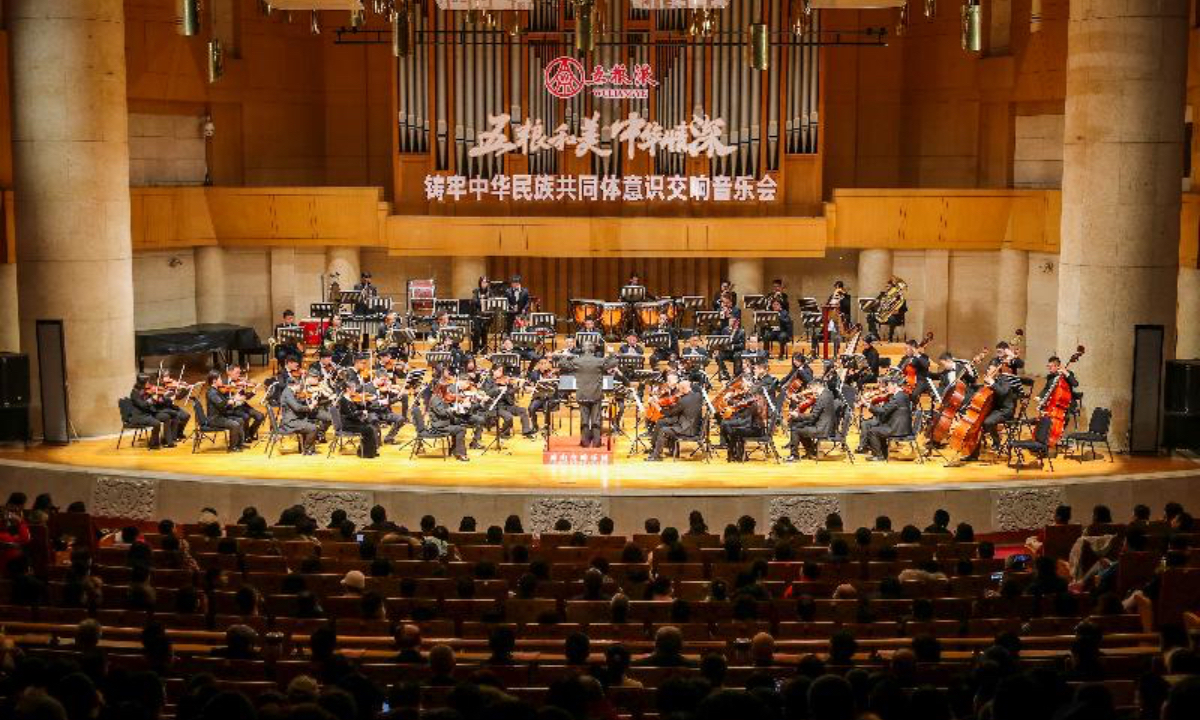ARTS / MUSIC
Symphony orchestra performance in Beijing, themed on unity of China's diverse ethnic groups

Photo: Courtesy of Wu Qian, Dong Mei/Chinese pictorial journal Minzu Huabao
On Wednesday night, a symphony concert incorporating a variety of elements such as orchestral music, folk songs, traditional Chinese drama and soprano solos was held at the Forbidden City Concert Hall in Beijing.
Themed around the unity of various ethnic groups in China, the event was performed by the Liangshan Symphony Orchestra, the sole symphony orchestra among the 30 ethnic autonomous prefectures in the country. The orchestra is based in Daliangshan, once one of China's poorest areas, which was lifted out of poverty in 2020.
In the first half of the concert, performances included an orchestral version of traditional Hanzhong Opera (a theatrical form originating from Wuhan, Central China's Hubei Province), as well as music featuring the erhu, a Chinese two-stringed instrument. There were also musical dance performances, and variations of folk songs from Sichuan and Yunnan provinces. These pieces interpreted the diverse and shared vitality of ethnic groups' music.
In the second half of the concert, highlights included soprano solo performances of "I Love You, China," as the focus shifted to portraying magnificent landscapes, history and culture.
This performance marked the third appearance of the Liangshan Symphony Orchestra in a concert hall. Such appearances have been limited due to their mountainous origins and humble conditions. With funds from the local government, the orchestra has continued to give weekly charitable performances at a local theater in Xichang, a city in Southwest China's Sichuan Province, since its establishment in 2013.
"The orchestra's initial purpose was to enrich the spiritual life of the people in Daliangshan and change the stereotype of poverty associated with the region," Tang Qingshi, the founder of the orchestra and a nationally recognized conductor, told the Global Times on Wednesday, adding that "the orchestra has stood as a beacon representing the region."
Over the past decade, the accumulated rehearsal time of the orchestra has exceeded 12,000 hours, with nearly 600 performances showcasing over 700 musical pieces. The participation involved approximately 43,000 individuals, and the concerts have drawn audiences numbering over 600,000 people in total.
However, for Tang, it's far from enough. Tang told reporters that if the highest score is 10 points, he currently rates the orchestra at between 5 and 6 points.
Tang hopes that the local area can establish a formal concert hall, which can provide the orchestra with a more official venue for their performances. In the future, Tang hopes that the orchestra can extend its reach beyond Daliangshan, even hosting nationwide tours to further share the rich cultural heritage of the region.
